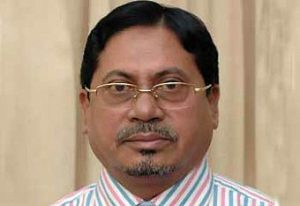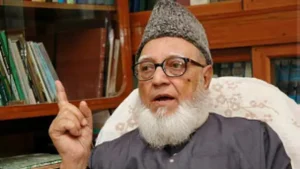
During his time in Zhejiang, Xi proved himself as a capable administrator and built his reputation as a pragmatist. This earned him a transfer to Shanghai in 2007 as the Party Secretary of the city. Shanghai, one of China’s most important financial and economic centers, offered Xi the chance to showcase his leadership skills on a larger stage.
4. Rise to Provincial Leadership (2002-2007)
Xi Jinping’s most notable early political advancement occurred in 2002, when he became the Party Secretary of Zhejiang Province, and later moved to Shanghai as Party Secretary in 2007. Both provinces were crucial in China’s economic transformation, and Xi’s role in overseeing this transition solidified his reputation as a competent leader.
Xi’s time in Shanghai was relatively short, but significant. While there, he gained national attention for his firm handling of corruption within the local Party ranks and his work on economic development.
5. A Key Transition to National Leadership (2007-2012)
Xi’s career took a national turn when he was promoted to the Politburo Standing Committee, the highest decision-making body within the CCP, in 2007. His appointment to the Politburo marked him as a rising star in the party.
In 2012, he was selected as the General Secretary of the CCP, following the retirement of Hu Jintao. This position positioned him as the supreme leader of China, leading to his eventual succession to the role of President of China in 2013.
Political Style and Ideology
Early in his career, Xi was often seen as a moderate reformer, emphasizing economic growth, anti-corruption measures, and improving governance. His focus on local economic development, coupled with his loyalty to the Party, shaped his leadership style in the years to come.
Xi’s early years in Fujian, Zhejiang, and Shanghai helped him establish a reputation as someone with a pragmatic, hands-on approach to governance, combining economic reform with strong Party discipline.
Xi Jinping’s Leadership
Xi Jinping’s leadership is characterized by a combination of authoritarian rule, centralization of power, nationalism, and a strong push for economic and military modernization. His leadership style reflects both his personal background and the priorities of the Chinese Communist Party (CCP) under his guidance. Since assuming the presidency in 2013, Xi has taken a dominant role in both domestic and foreign affairs, reshaping China’s political, economic, and social landscape. Below is a breakdown of Xi Jinping’s leadership in various areas:
1. Centralization of Power
One of the defining features of Xi Jinping’s leadership has been his consolidation of power within the CCP and the state. He has amassed significant authority and influence, making him the most powerful leader of China since Mao Zedong.
Abolition of Term Limits: In 2018, the National People’s Congress of China abolished presidential term limits, effectively allowing Xi to remain in power indefinitely, further centralizing his authority.
Xi has been described as a “paramount leader”, a title that gives him control over all major state institutions, including the military (People’s Liberation Army) and the Party. He has also established himself as the core of the CCP, a title that further strengthens his dominance within the Party.
2. Ideological Leadership and “Xi Jinping Thought”
Xi has made ideology a central aspect of his leadership. In 2017, the Communist Party of China (CPC) enshrined “Xi Jinping Thought on Socialism with Chinese Characteristics for a New Era” into the Party Constitution, elevating his political philosophy to the same level as Mao Zedong’s “Mao Zedong Thought” and Deng Xiaoping’s “Deng Xiaoping Theory”.
“Xi Jinping Thought” emphasizes the centrality of the Party, Chinese nationalism, economic modernization, and social stability. It stresses the importance of Marxism-Leninism, Mao Zedong’s principles, and party discipline, while adapting to China’s changing economic and social needs.
3. Anti-Corruption Campaign
One of Xi Jinping’s most high-profile initiatives has been his anti-corruption campaign, which was launched soon after he became General Secretary in 2012. The campaign has targeted high-ranking officials and Party members, many of whom have been arrested or purged.
While the campaign has been successful in curbing corruption to some degree, it is also seen as a way for Xi to consolidate power by removing rivals and ensuring loyalty within the Party. Thousands of officials have been investigated, and many have faced trial, which has helped Xi strengthen his control over the Party.
4. Economic and Market Reforms
Xi Jinping has continued to promote economic reform while maintaining state control over critical sectors of the economy. Under his leadership, China has pursued “Made in China 2025”, a plan aimed at transforming China into a global leader in high-tech industries like artificial intelligence, robotics, biotechnology, and clean energy.
Despite the drive for economic modernization, Xi has emphasized that China must remain under state capitalism, ensuring that key industries are controlled by the state or state-owned enterprises (SOEs).
He has also prioritized the Belt and Road Initiative (BRI), which aims to enhance global trade links through infrastructure projects, making China a more influential player in global trade and diplomacy.
5. Nationalism and the Chinese Dream
Xi has consistently emphasized the concept of the “Chinese Dream”, which calls for the rejuvenation of the Chinese nation. This vision reflects Xi’s focus on strengthening China’s global standing and ensuring that it becomes a dominant power on the world stage.
Xi has used nationalism as a tool to consolidate support domestically. He often speaks of restoring China to its former glory and reaffirming its role as a global leader. This has been reflected in his foreign policies, especially in South China Sea territorial disputes and relations with Taiwan.
Xi’s rhetoric is centered on national pride, self-sufficiency, and revitalizing the Chinese civilization after the perceived “century of humiliation” imposed by Western and Japanese powers.
6. Strong Military Leadership
Xi has placed a significant emphasis on modernizing China’s military and increasing its global presence. Under his leadership, China has undertaken substantial investments in military technology, including advancements in cyberwarfare, artificial intelligence, and hypersonic weapons.






